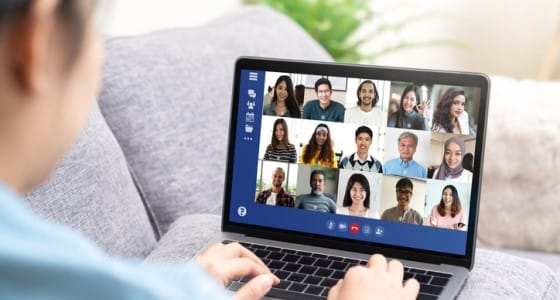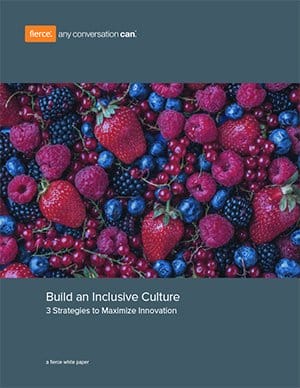
Diversity, equity, and inclusion (DE&I) has become a hot topic in 2020.
I care deeply about diversity, and as a Mexican-American woman, diversity isn’t just a topic of discussion for me, I have experienced real discrimination and I have also benefited greatly from real inclusivity.
Something I hear a lot from our clients is that diversity is easy to measure so it gets a lot of attention. You can report out how much you’ve increased your race, gender, or LGBTQ+ presence, however, it’s a lot harder to measure how effective people are at including those individuals once inside the organization.
Bigger than this, leveraging diversity of thought pushes us all beyond our pre-conceived notions and unconscious bias and forces us to surround ourselves with individuals not like us. It’s the leveraging of diversity and how I hope to be more inclusive in 2020 that I want to tackle today in this blog.
The Importance of Context in Inclusion Efforts
I’ll start with my context. I’m a sales leader and for my world, inclusion is not just our internal company, but also how we are leveraging diversity with our clients.
In our Fierce work, our Third Transformational Idea is, “All conversations are with myself, and sometimes they include other people”. To me, inclusivity starts with this idea.
We have to recognize that we are moving through the world with our own context and that the story inside our head is just that, it’s ours! The person we talk to most throughout the day is ourselves, and so the work starts with us examining what is the substance of that conversation.
As a leader, a conversation I have often with myself is, “who should I share my ideas and the decisions I need to make with?” It looks something like: “I have a new idea/big decision to make, let me talk to my go-to-person (enter name here)”.
Harmless enough, except you have to ask yourself, why is that person always who you go to with your great ideas or feedback on big decisions? Once you move to execution, are they also who you put on the project, thus giving them advantage or exposure in the company?
What would it look like if you had the same thought and instead it went like: “I have a new idea/big decision to make, let me talk to my go-to-person and also two other people I NEVER go to”.
That could be a new hire, someone in a different department, someone of a different race, gender, or orientation.
An example for me right now is around the Sales Onboarding Program myself and my sales leaders are building. My typical context would be that I should go to my more tenure salespeople to help with what should be covered during this period of the ramp.
I agree with this, but I lose out on being more inclusive if I don’t in fact heavily include my most recently ramped reps and the reps ramping right now. It might feel weird to ask the people who are less than 30 days into your organization what do they need to know, but here’s the thing — you’ll never get this time back, these fresh eyes to show you what you might be missing.
Why Inclusion Best Practices Start With You
This leads me to our Second Transformational Idea, “The Conversation is the Relationship”. By this logic, if you want more inclusive relationships and thus a more inclusive culture, you have to start with inclusivity in the conversation.
So what do inclusive conversations look like? A simple place to start is to ask more questions. If you audited your relationships as a people leader, how often are you asking follow up questions or asking your team to say more about an idea?
How often do you do this with someone who is obviously not like you – either in age, race, or gender? Or sometimes even more problematic, how often do you ask follow-up questions of someone who THINKS differently than you?
On my team, I have ages ranging from Baby Boomers to Millenials. As an older millennial myself, I find myself in the middle of different points of view, styles of working, and expectations. To create a sales culture that is inclusive, I try to always ask the follow-up questions: “say more about that” or “tell me more” when I get a competing reality.
This practice gives me time to listen and learn, as well as creating a culture of feeling included. On more than one occasion, I have had to be honest and share my bias as I find this easier to be vulnerable. When I have asked questions, I have learned more and am usually already thinking about how to take in this other person’s point of view.
This brings me to our final tip, our First Transformations Idea, “Our lives succeed or fail, gradually then suddenly, one conversation at a time”. Having more inclusive conversations and thus relationships and culture start with this idea of one conversation at a time.
Getting out of your comfort zone, challenging yourself, listening more and asking more questions can happen with every conversation with yourself and then with others.
You have the power to start this immediately. No big initiative or process needed – just practice and do the work starting with you.
At Fierce, we often break up these big ideas by committing to one small practice a day. That gradually then suddenly has a compounding effect that has you reaching your goal of being a more inclusive leader.
For me, this month I am focusing on asking for at least two points of view that are different than mine or come from someone different than me, which can look a lot of different ways. How do you create inclusive cultures at your organization? Find us on your social network of choice and let us know!

ALIGN VALUES AND BEHAVIORS IN YOUR COMPANY
Start by building an inclusive workplace culture
Tags: #Workplace Conflict




